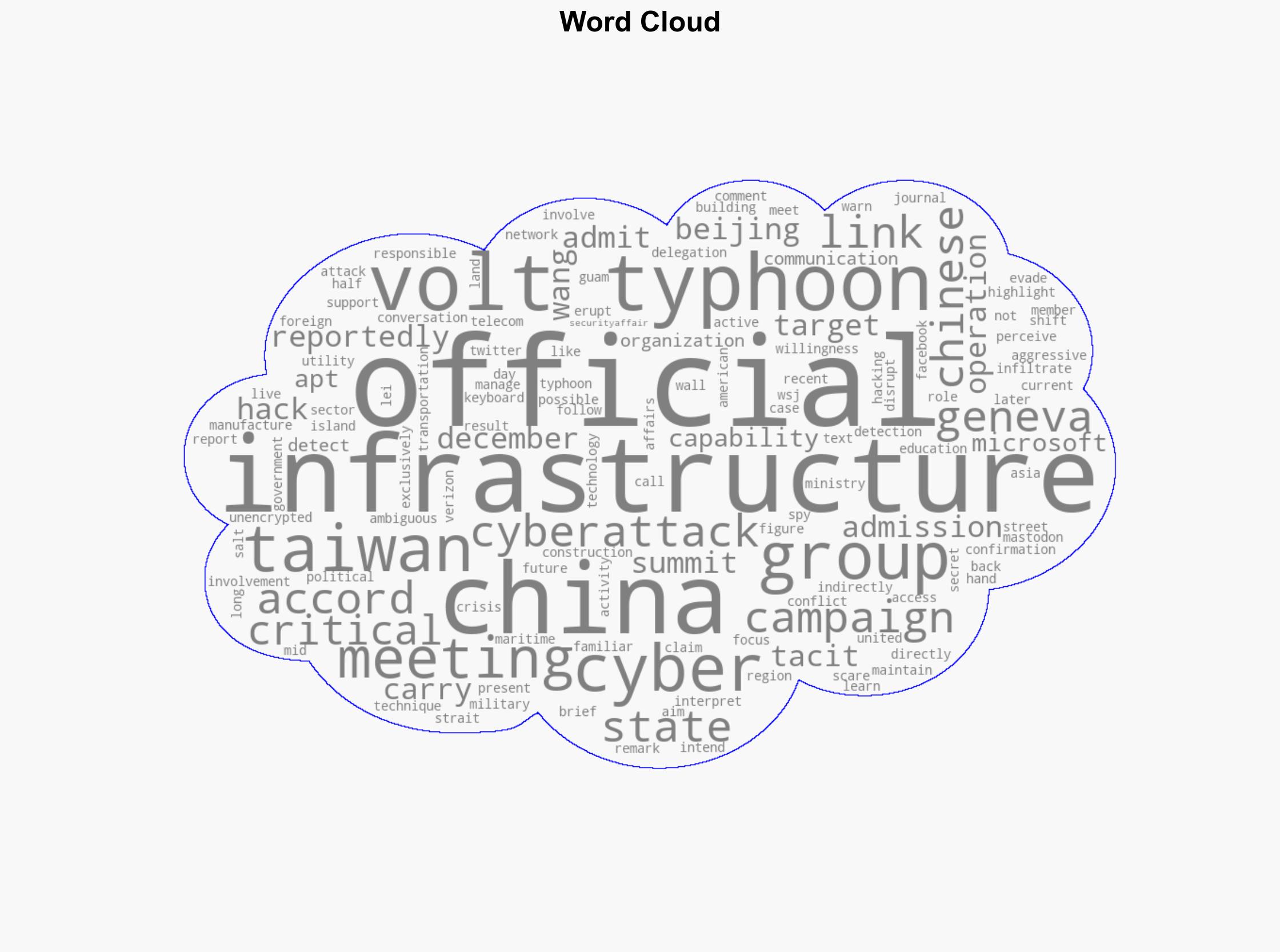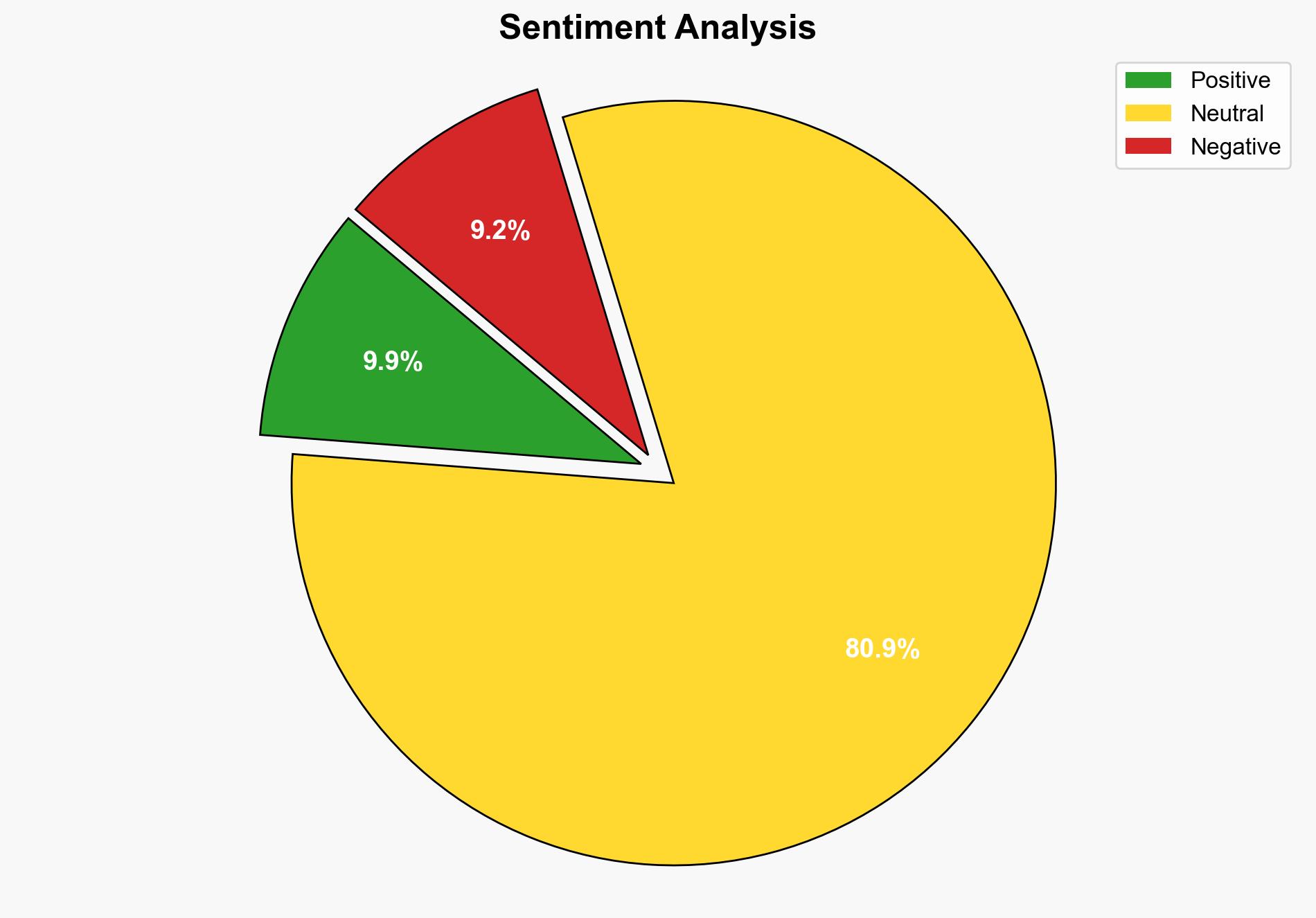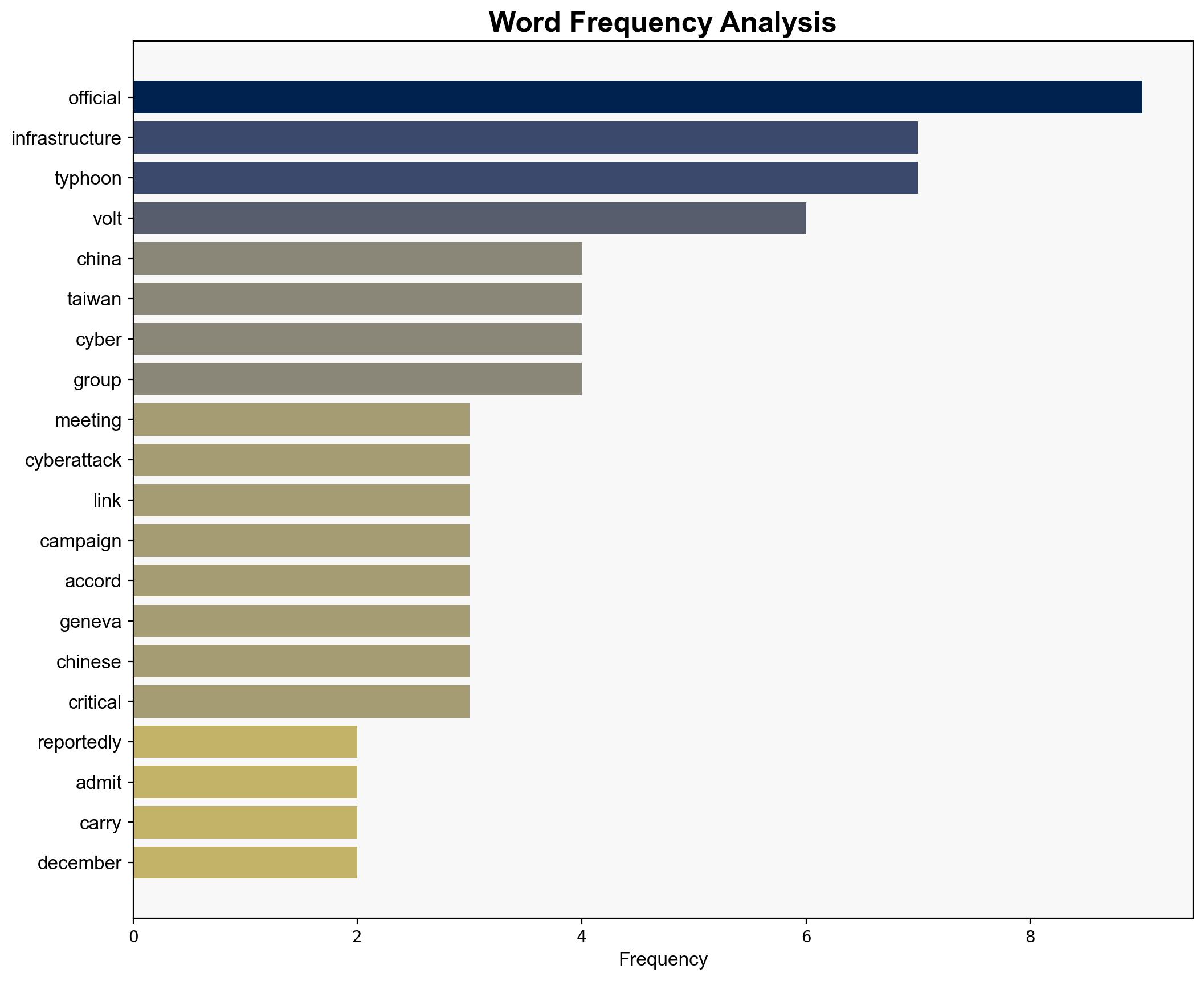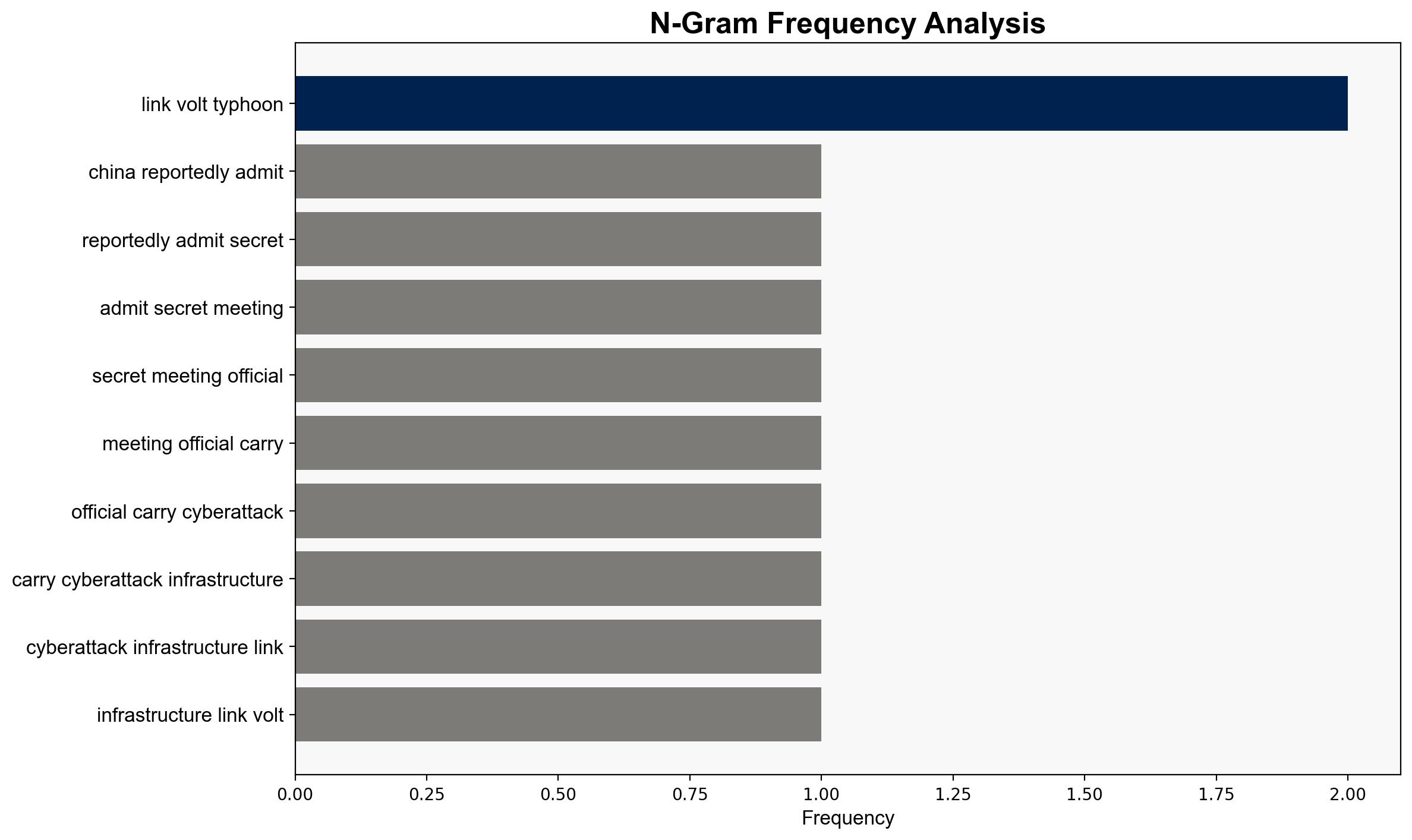China admitted its role in Volt Typhoon cyberattacks on US infrastructure – Securityaffairs.com
Published on: 2025-04-13
Intelligence Report: China admitted its role in Volt Typhoon cyberattacks on US infrastructure – Securityaffairs.com
1. BLUF (Bottom Line Up Front)
China has indirectly admitted to conducting cyberattacks on U.S. infrastructure, linked to the Volt Typhoon campaign, during a meeting with U.S. officials. These attacks are reportedly a response to U.S. military support for Taiwan. The Volt Typhoon group has been active since mid-2021, targeting critical infrastructure sectors. Immediate actions are required to bolster cybersecurity defenses and address potential geopolitical tensions.
2. Detailed Analysis
The following structured analytic techniques have been applied for this analysis:
General Analysis
The Volt Typhoon cyberattacks represent a strategic maneuver by China to leverage cyber capabilities as a deterrent against U.S. involvement in Taiwan. The campaign’s focus on critical infrastructure highlights the potential for significant disruption in the event of heightened tensions. The use of living-off-the-land techniques indicates a sophisticated approach to evading detection, complicating defensive measures.
3. Implications and Strategic Risks
The implications of China’s cyber activities are profound, posing risks to national security, regional stability, and economic interests. The potential for disruption of critical communications infrastructure could impact military operations and civilian services. The strategic use of cyberattacks as a geopolitical tool underscores the need for enhanced cybersecurity measures and international cooperation to mitigate risks.
4. Recommendations and Outlook
Recommendations:
- Enhance cybersecurity protocols across critical infrastructure sectors to detect and mitigate advanced persistent threats.
- Strengthen international alliances and intelligence-sharing frameworks to address cyber threats collaboratively.
- Invest in advanced cybersecurity technologies and workforce training to improve resilience against sophisticated attacks.
Outlook:
Best-case scenario: Strengthened cybersecurity measures and diplomatic efforts lead to reduced tensions and a decrease in cyberattacks.
Worst-case scenario: Escalation of cyber activities results in significant disruptions to critical infrastructure and heightened geopolitical tensions.
Most likely outcome: Continued cyberattacks with intermittent disruptions, necessitating ongoing vigilance and adaptive defense strategies.
5. Key Individuals and Entities
The report mentions significant individuals and organizations involved in the events:
- Wang Lei
- Volt Typhoon
- Microsoft





